Related Research Articles
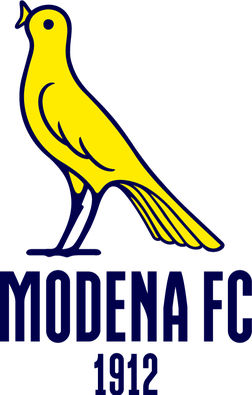
Modena Football Club 2018, commonly referred to as Modena, is an Italian football club based in Modena, Emilia-Romagna. The club was founded in 1912, and refounded in 2018, having spent the majority of its existence playing in Serie B. They play in Serie B, having won 2021–22 Serie C's Group B title.
Mullah Habibullah was an Afghan who died on December 4, 2002 while in US custody at the Bagram Collection Point, a US military detention center in Afghanistan. His death was one of those classed as a homicide, though the initial military statement described his death as due to natural causes.

Georg Konrad Morgen was an SS judge and lawyer who investigated crimes committed in Nazi concentration camps. He rose to the rank of SS-Sturmbannführer (major). After the war, Morgen served as witness at several anti-Nazi trials and continued his legal career in Frankfurt.
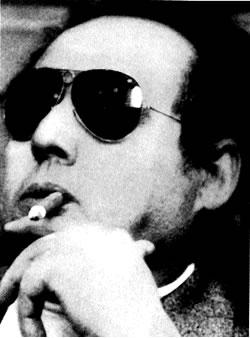
Luciano Leggio was an Italian criminal and leading figure of the Sicilian Mafia. He was the head of the Corleonesi, the Mafia faction that originated in the town of Corleone. He is universally known by the surname Liggio, a result of a misspelling in court documents in the 1960s.

Italian war crimes have mainly been associated with the Kingdom of Italy, Fascist Italy and the Italian Social Republic starting from the Italo-Turkish War then to Pacification of Libya, the Second Italo-Ethiopian War, the Spanish Civil War, and World War II.
The Decima Flottiglia MAS was an Italian flotilla, with marines and commando frogman unit, of the Regia Marina. The acronym MAS also refers to various light torpedo boats used by the Regia Marina during World War I and World War II.
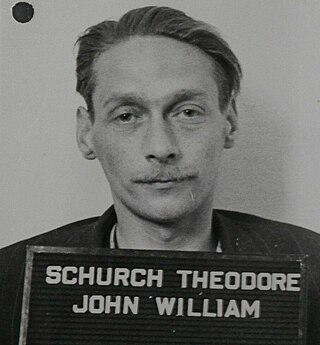
Theodore William John Schurch was a British soldier who was executed under the Treachery Act 1940 after the end of the Second World War. He was the last person to be executed in Britain for an offence other than murder.

During World War II, the Allies committed legally proven war crimes and violations of the laws of war against either civilians or military personnel of the Axis powers. At the end of World War II, many trials of Axis war criminals took place, most famously the Nuremberg trials and Tokyo Trials. In Europe, these tribunals were set up under the authority of the London Charter, which only considered allegations of war crimes committed by people who acted in the interests of the Axis powers. Some war crimes involving Allied personnel were investigated by the Allied powers and led in some instances to courts-martial. Some incidents alleged by historians to have been crimes under the law of war in operation at the time were, for a variety of reasons, not investigated by the Allied powers during the war, or were investigated but not prosecuted.
The Holohan murder case concerns the death of OSS Major William Holohan in Italy during the Second World War.

On March 1, 1951, the Soviet-controlled Communist Polish secret police, Urząd Bezpieczeństwa (UB), carried out the execution of seven members of the 4th Headquarters of the anti-Communist organization Wolność i Niezawisłość (WiN) in the Mokotów Prison in Warsaw. All those executed were members of WiN who, during World War II, took an active part in anti-Nazi resistance.
Lieutenant Colonel Robert Leith-Macgregor MC DFC was a British Army officer and Royal Air Force pilot. He fought in the Second World War, initially as an infantry officer in the Royal Northumberland Fusiliers, before training as a pilot and transferring to the Royal Air Force. He was shot down several times and eventually became a prisoner of war. Post-war, he returned to the army, serving again with the Royal Northumberland Fusiliers in the Korean War, and later commanding a battalion of that regiment.
Wilhelm Friedrich Boger, known as "The Tiger of Auschwitz", was a German police commissioner and concentration camp overseer. He gained infamy for the atrocities he committed at Auschwitz, including torturing prisoners using a device known as the "Boger swing".

The Battle of Garfagnana, known to the Germans as Operation Winter Storm and nicknamed the "Christmas Offensive", was a successful Axis offensive against American forces on the western sector of the Gothic Line during World War II. It took place in December 1944 in the north Tuscan Apennines, near Massa and Lucca.
The Arakcheev and Khudyakov case was a criminal case against two officers of Dzerzhinsky division of Internal Troops of the Ministry of Internal Affairs of the Russian Federation, Sergey Arakcheev and Evgeny Khudyakov, for allegedly killing three residents of the village Lacha Varandy : Said Jangulbaev, Abdulla Dzhambekov and Nazhmuddin Khasanov.

Many Wars Ago is a 1970 anti-war film set on the Alpine Front of the First World War. Directed, produced, and co-written by Francesco Rosi, the film is based on Emilio Lussu's memoir Un anno sull'altipiano, recounting his experiences at the Battle of Asiago. The Italian–Yugoslav co-production was filmed in Belgrade and Zagreb, and stars Mark Frechette, Gian Maria Volonté, and Alain Cuny. It premiered at the 31st Venice International Film Festival.
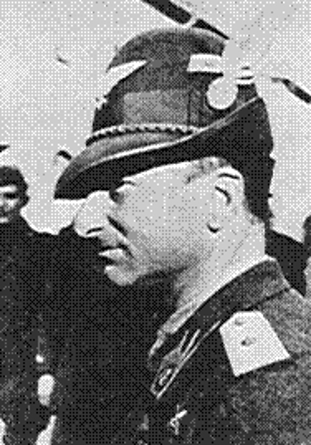
General Mario Carloni was an Italian soldier who fought in World War I and World War II. He started his career in 1912 joining as a volunteer in the 5th Reg. of Bersaglieri in Senigallia. In 1940 he reached the rank of colonel.

The 4th Alpine Division "Monterosa" was one of four divisions raised by Mussolini's Italian Social Republic. It existed from 1 January 1944 until 28 April 1945.
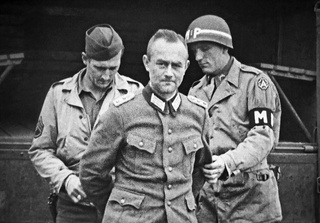
Curt Bruns was a Wehrmacht captain and war criminal. He was the first German war criminal to be executed by the United States Army for war crimes after World War II. Bruns was convicted of ordering the executions of two U.S. prisoners of war during the Battle of the Bulge after learning that the two men were German-born Jews. When giving the order, he said, "The Jews have no right to live in Germany."
References
- ↑ "Article clipped from The Kansas City Times". Newspapers.com. Retrieved 2023-05-08.
- 1 2 "Clipped From The New York Age". The New York Age. 1947-03-01. p. 3. Retrieved 2022-09-13.
- ↑ "Alfred Lyth". Oakland Tribune. 1946-09-29. p. 3. Retrieved 2022-09-13.
- ↑ "Sunday Chicago bee. [volume] (Chicago, Ill.) 1925-19??, October 20, 1946, SECTION ONE, Page 6, Image 6 - Chronicling America - The Library of Congress". chroniclingamerica.loc.gov. Retrieved 2022-09-13.
- ↑ Gentile, Carlo; Corniani, Francesco (2022-11-01). "Zur Geschichte der italienisch-faschistischen Division Monterosa im deutsch besetzten Italien 1944–1945". Quellen und Forschungen aus italienischen Archiven und Bibliotheken. 102 (1): 417–447. doi: 10.1515/qufiab-2022-0019 . ISSN 1865-8865.
- ↑ "La vera storia del Tenente pilota Lyth". digilander.libero.it. Retrieved 2016-05-01.
- ↑ "Mario Carloni e figlio". digilander.libero.it. Retrieved 2022-09-13.
- ↑ "Italians released". The Daily Calumet. 1951-01-19. p. 1. Retrieved 2022-09-13.